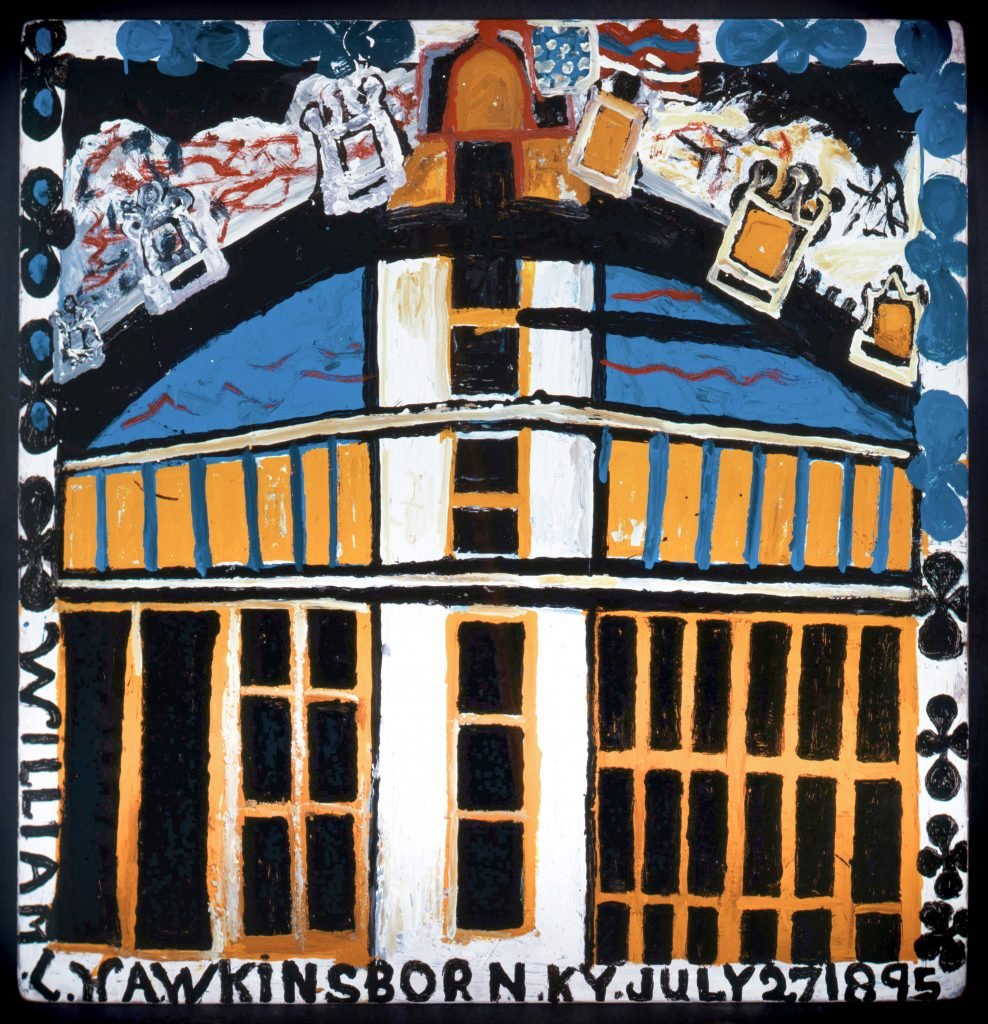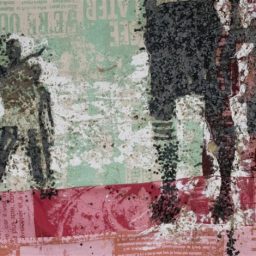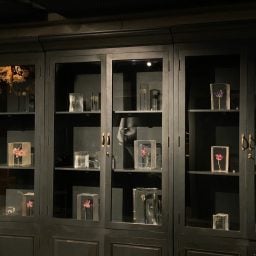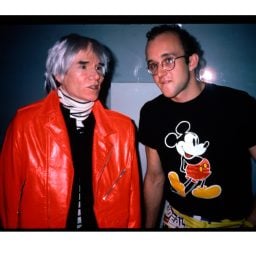Every month, hundreds of galleries add newly available works by thousands of artists to the Artnet Gallery Network—and every week, we shine a spotlight on one artist you should know. Check out what we have in store, and inquire for more with one simple click.
What You Need to Know: At this year’s Art Show, organized by the Art Dealers Association of America, New York’s Ricco/Maresca Gallery is presenting a booth devoted to the idiosyncratic visions of self-taught American artist William Hawkins (1895–1990). Hawkins, who was born in rural Kentucky and lived in Columbus, Ohio, worked odd jobs in unskilled labor for most of his life. It was only in the 1970s that he started making art, but his passion for it was immediate and he continued painting devotedly until a debilitating stroke in 1989. Hawkins was working in total obscurity until his friend Lee Garrett entered one of his paintings in the 1982 Ohio State Fair, where it won first prize. Dealers Frank Maresca and Roger Ricco met him later that year, taking on representation of the artist in 1983.
At the Art Show, on view November 3–7 at New York’s Park Avenue Armory, the gallery is featuring 10 works by Hawkins, which together exemplify the artist’s dexterous, witty, and inventive approach to painting (Hawkins liked to quip that he only needed one brush).
Why We Like It: Print media was Hawkins’s primary inspiration—the artist collected newspapers and magazines in a suitcase, to which he would look to inspire his expressive and often improvisational creations. In his paintings, one might find animals (real, imaginary, or extinct), important architectural landmarks, Biblical scenes, or images from pop culture.
Compositionally, the works are arresting—and boldly intuitive. Hawkins poured and dripped enamel paint, sometimes straight from the can, manipulating its flow by tilting the canvas this way or that. Other times he added bits of collage for texture; wood, sand, and sawdust often cover their surfaces. Many of these paintings are finished off with decorative borders that frame his compositions and incorporate his name, birthplace, and birthdate—a fascinating detail, given that Hawkins struggled to read and write.
What the Gallery Says: “I learned more about art from William Hawkins than from any of my professors in art school. Hawkins had less than a third-grade education but he was born with a gift; he was completely instinctive and, most importantly, absolutely fearless. A gift is a rather mysterious thing, whether it manifests through music, math, or painting—and like any other gift it’s at its best when shared with others. One day, a long time ago, as I was watching Hawkins paint at his home in Columbus, Ohio. I just marveled at his improvisational approach to creating a painting. I thought that the process was very much like jazz, and just as I had that thought, the artist turned and looked at me and Roger Ricco and said: “See dat, boys? The paintin’s makin’ itself.” Like anything in life, you can’t force something great into existence. Hawkins had the ability to surprise, entertain, and communicate without the baggage that so many of us carry around with us,” said Frank Maresca, the gallery’s cofounder.
Browse works from the artist below.
William Hawkins
Did Comets Kill the Dinosaurs? (1985)
Ricco/Maresca
Inquire for More Information
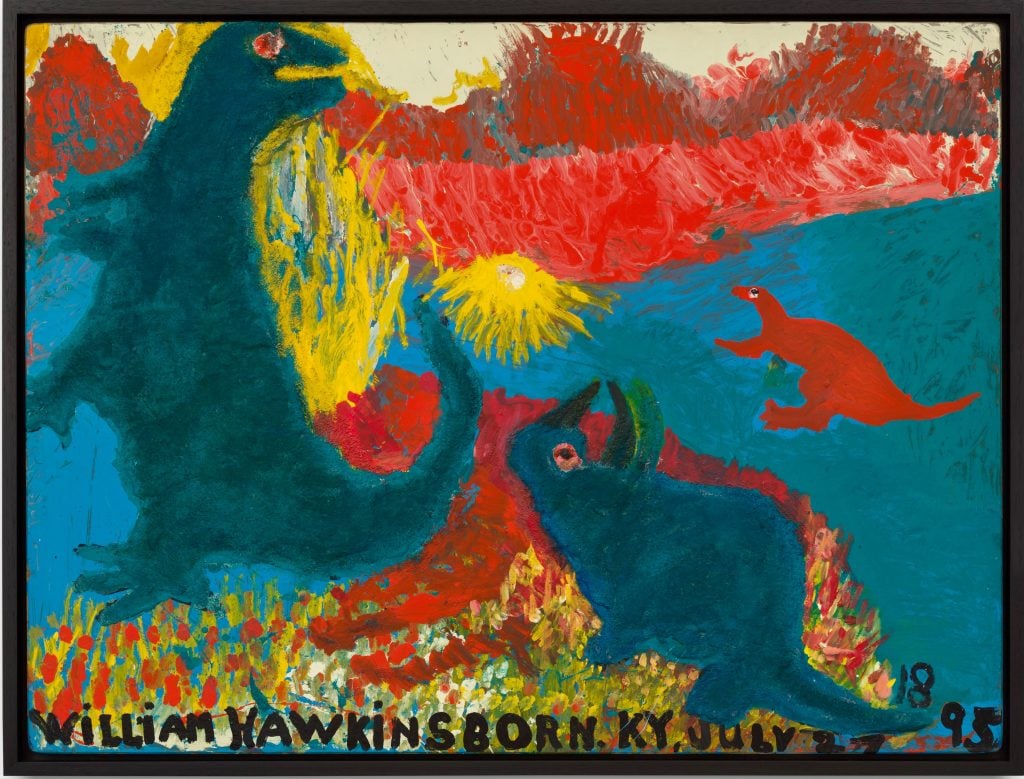
William Hawkins, Did Comets Kill the Dinosaurs? (1985). Courtesy of Ricco/Maresca.
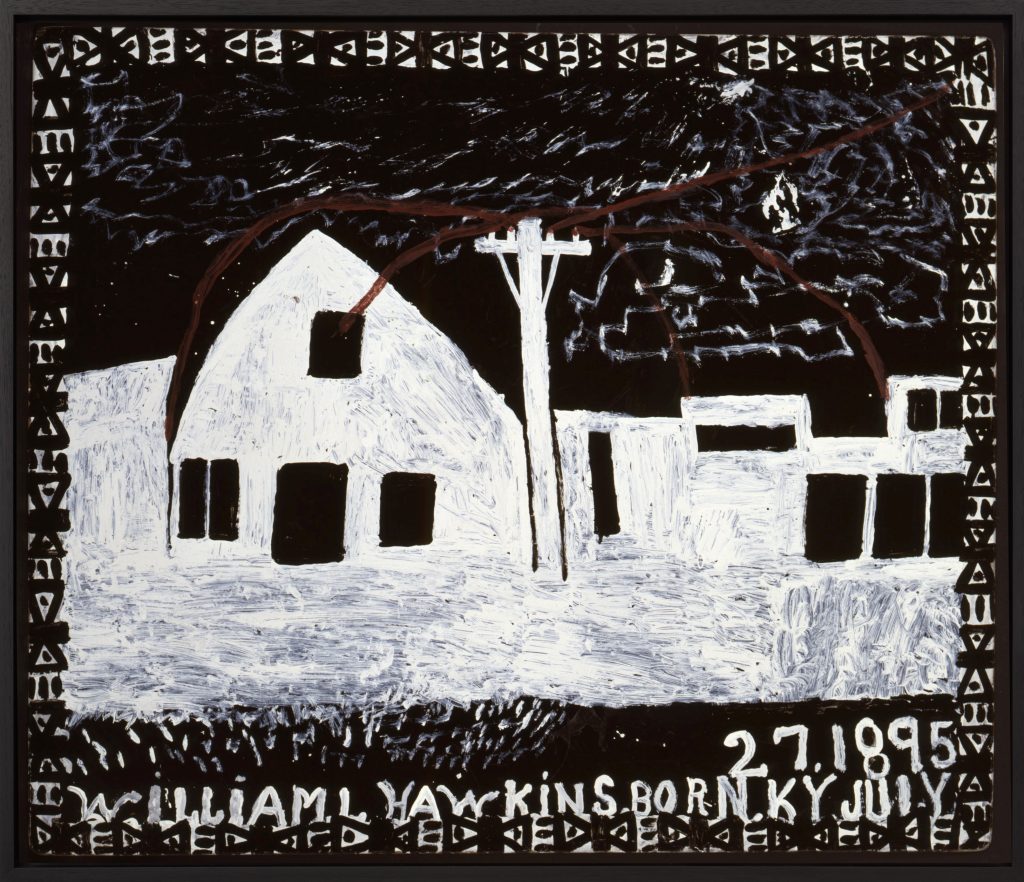
William Hawkins, Coal Town (1989). Courtesy of Ricco/Maresca.
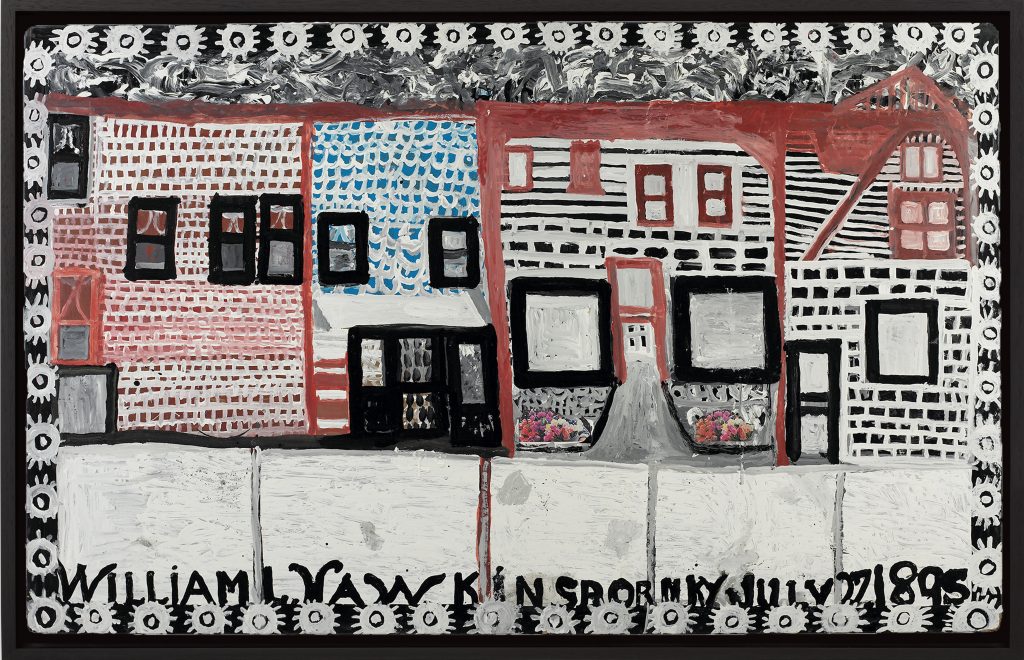
William Hawkins, Food Bar No. 3 (1989). Courtesy of Ricco/Maresca.
William Hawkins
Nine Faces of Modern Man (1984)
Ricco/Maresca
Inquire for More Information
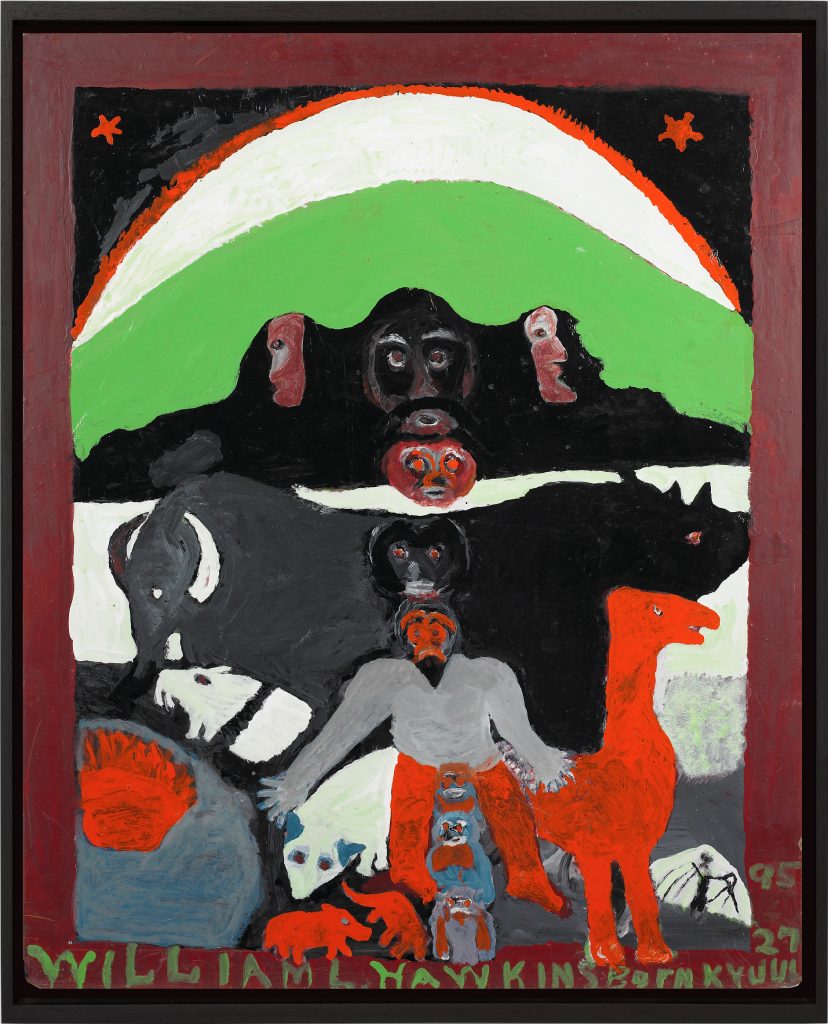
William Hawkins, Nine Faces of Modern Man (1984). Courtesy of Ricco/Maresca.
